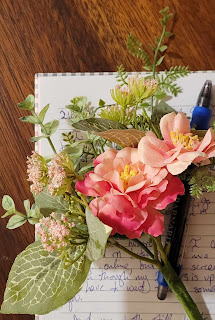The first time a publishing professional commented that my
chronic illness disability might be too scary for children, I was a bit taken
aback. After all, my own children live this reality every day.
Yes, it can be scary. But is it the kind of scary that we
need to shield our children from or is that doing them a disservice? Is it the
kind of scary that has no value to the consciousness of children, and all
people, as they consider their own lives and how they interact in their
community?
There is a balance, and the question “Isn’t this too scary
for kids?” can be valid. But perhaps the answer can be “So how can we show the
scary without it being overwhelming?”
This is something already happening in children’s literature
outside of chronic illness representation. In How High the Moon by Karyn
Parsons, the dangling feet from hanged Black people are certainly scary, and they
should be.
But disability in children’s literature too often has an element of
comedy or there’s a message that the disability isn’t too bad or as hard as you
might think. In Insignificant Events in the Life of a Cactus by Dusti
Bowling, for instance, the plucky armless heroine who grabs life by the horns
is loveable and brave, but I love more the times when she admits her disability
is hard. Scary even.
There seems to be a stigma with chronic illness and medical
disabilities in particular. Perhaps this stems from a fear of hospitals and
medical procedures which small children often fear. In my picture
book, Same Love, Different Hug, a child is lying in bed with a glucose
monitor. We thought that wouldn’t be too scary and I am glad to have this
representation in my book. But what about children who need breathing machines,
drip bags, ostomies, etc.? Too scary?
It’s important to show that disabled people can play
baseball, make friends at school, and live life to the fullest. Because that’s
real. But it’s also important to show that sometimes we may need to stay in bed
for long periods of time, be stuck in the hospital, or have medical equipment
attached to us. Because that’s real, too.
Children who have “scary” disabilities aren’t shielded from
it by pretending it doesn’t exist or it’s not as bad as it seems. They are
supported through it by being shown that some might struggle more, they might
struggle more, and it’s OK to admit that and it’s OK to sometimes lay in bed
for weeks and not try to make your life like everyone else’s. And I think that’s
a view everyone can get on board with in children’s literature.
By Sarah Hovorka, author of Same Love, Different Hug

Bio
Sarah Hovorka is the author of several picture books and short stories for children and adults. As a bookworm and self-proclaimed homebody, she aims to share a little of her world through her writings. Beyond reading and writing, Sarah loves to play games, homeschool, and enjoy trees with her husband and three sons in California. You can find out more about her, her books, and follow her blog at www.SarahHovorka.com.
















.png)